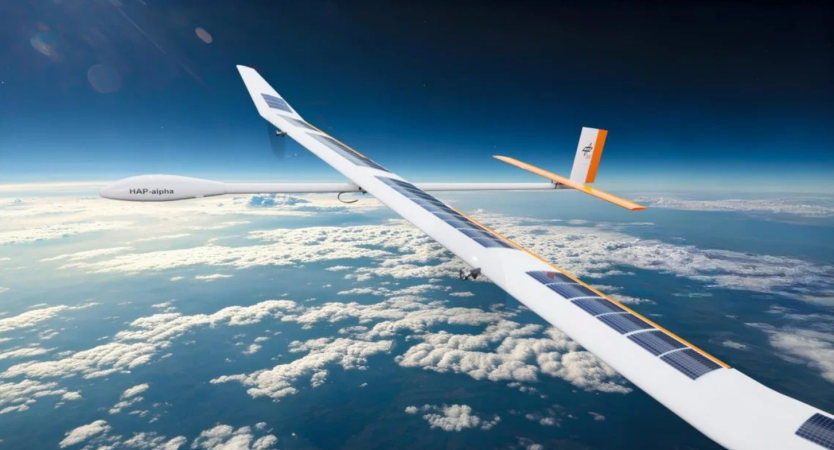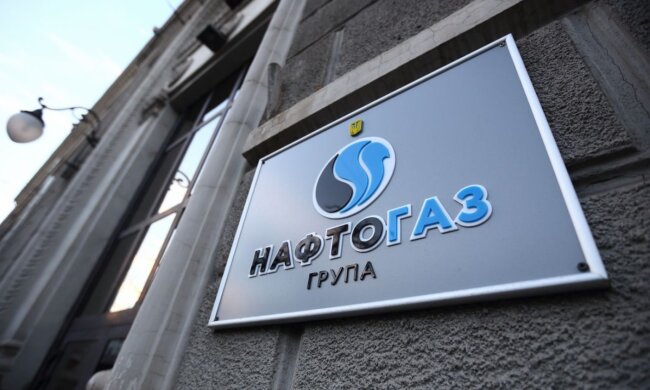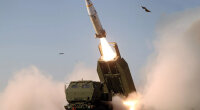The first part of the article provides a brief overview of modern High-Altitude Platform Stations (HAPS) as a promising direction for technological and economic development. A wide range of civilian applications is analyzed: deployment and enhancement of telecommunications networks (4G/5G), environmental and climate monitoring, precision agriculture, mapping, critical infrastructure inspection, and state border protection. An overview of leading global programs is conducted, along with justification of the economic advantages of HAPS compared to traditional satellite and aviation solutions. Key technologies underlying HAPS are examined: battery systems with high specific energy, flexible solar cells for stratospheric conditions, and lightweight composite materials, with an assessment of their current state globally and in Ukraine.
Given the challenges facing Ukraine due to the full-scale invasion by the russian federation, Part Two is devoted to dual-use potential. A concept for a stratospheric UAV (High-Altitude Unmanned Aerial Vehicle, HAUAV) and its application architecture (AURA) is proposed as a new link in the national security capabilities system. The concept envisages creating an aircraft with a cruise flight altitude of up to 22 km and modular payload of up to 180 kg, combining the advantages of HAPS/HALE/MALE class platforms and providing for implementation of its operational doctrine. Key technical challenges are analyzed — rarefied atmosphere aerodynamics, power supply at low temperatures, certification and airspace integration — and solutions are proposed. Operational and economic advantages are substantiated, particularly enhanced platform survivability and the ability to impose asymmetric exchange on the adversary.
Keywords: HAPS, HALE, MALE, HAUAV, stratospheric UAV, telecommunications, environmental monitoring, infrastructure inspection, dual-use, airspace control, asymmetric exchange.

Airbus Zephyr [1]
List of Abbreviations
HAPS (High Altitude Platform Station) – High-Altitude Platform Station HALE (High Altitude Long Endurance) – High-Altitude Long Endurance UAV MALE (Medium Altitude Long Endurance) – Medium-Altitude Long Endurance UAV UAV (Unmanned Aerial Vehicle) – Unmanned Aerial Vehicle ISR (Intelligence, Surveillance & Reconnaissance) – Intelligence, Surveillance & Reconnaissance LTA (Lighter-Than-Air) – Lighter-Than-Air aircraft HTA (Heavier-Than-Air) – Heavier-Than-Air aircraft IADS (Integrated Air and Missile Defense System) – Integrated Air and Missile Defense System SHORAD (Short-Range Air Defense) – Short-Range Air Defense SEAD (Suppression of Enemy Air Defenses) – Suppression of Enemy Air Defenses SA (Strategic Attack) – strategic aviation strikes on adversary's "centers of gravity": economy, industry, energy, C2 C2 (Command and Control) – command and control of forces and means: decision-making
Systematic Overview of Modern High-Altitude Platform Stations (HAPS)
The term "High-Altitude Platform Stations" (HAPS) itself does not define a specific type of carrier, but rather describes an operational concept — creating a sustainable infrastructure node in the stratosphere. Historically, this niche was more accessible to Lighter-Than-Air (LTA) aircraft — aerostats and airships, but recent years have seen rapid changes.
Significant development of thin-film solar cells, battery systems with high specific energy, and means ensuring reliable and long-duration communication and control of unmanned aircraft has brought closer the possibility of months-long airborne presence for Heavier-Than-Air (HTA) aircraft — glider-type designs powered by solar energy and using electricity to maintain horizontal flight. Hereafter, HTA HAPS will be considered as the subject of the presented material.
Currently, such aircraft claim a unique niche between ground infrastructure and space satellites, thanks to the combination of flight duration, flexibility, and cost-effectiveness. They form a new type of infrastructure capable of providing sustainable regional coverage for a wide range of tasks. HAPS operate above commercial aviation corridors and weather phenomena, providing them with stable atmospheric conditions. At the same time, their proximity to Earth and independence from orbit, compared to satellites, provides certain advantages, making them a promising solution for commercial application.
Today, several key projects exist worldwide that define the global approach to HAPS:
Airbus Zephyr (United Kingdom/EU)
Description: A solar-electric unmanned aerial vehicle (UAV) of aircraft type (HTA), which is the record holder for non-stop flight duration. During one of the tests, the aircraft spent 64 days in the air. Zephyr has a wingspan of 25 meters, weighs about 75 kg, and can carry a payload of up to 5 kg.
Purpose of creation: The main goal is to create a "pseudo-satellite" for continuous observation, reconnaissance, and communications (ISR & Communications). Airbus positions Zephyr as a dual-use platform. For civilian needs, it can provide environmental monitoring (e.g., forest fires), mapping, and provide 4G/5G communication services in areas of natural disasters or in remote regions. In the military segment, it is a cost-effective alternative to satellites for prolonged reconnaissance over a specific region. [1]
BAE Systems PHASA-35 (United Kingdom)
Description: An ultra-light solar-electric UAV with a wingspan of 35 meters and weight of only 150 kg. The platform is designed to carry a payload of up to 15 kg and can stay airborne for up to one year. In 2023-2024, the aircraft successfully conducted flights to the stratosphere at altitudes exceeding 20 km.
Purpose of creation: PHASA-35 is being developed as a flexible and significantly cheaper alternative to traditional satellites. The main objectives are providing sustainable communications (including 5G), Earth remote sensing, military reconnaissance, border protection, and maritime surveillance. The key advantage emphasized by developers is payload modularity, allowing rapid platform adaptation for various missions. [2]
SoftBank Corp. (Japan/USA)
Description: Japanese corporation SoftBank is implementing a unique dual strategy, simultaneously developing two types of platforms: aircraft (HTA) "Sunglider" (developed jointly with AeroVironment) and aerostat (LTA) from Sceye company. Sunglider is a giant HAPS with a wingspan of 78 meters, designed for long-duration flights. [3]
Purpose of creation: SoftBank's main and most ambitious goal is building a global Non-Terrestrial Network (NTN). HAPS are viewed as a key element for deploying 5G networks, and prospectively 6G, especially in developing countries and for covering "dead zones." Special focus is placed on providing communications during natural disasters, which is extremely relevant for Japan. SoftBank plans to launch its first commercial services in 2026. [4]
Kea Aerospace Kea Atmos (New Zealand)
Description: A solar-electric UAV that is the first stratospheric aircraft designed and built in the Southern Hemisphere. The Kea Atmos Mk1 prototype has a wingspan of 12.5 meters and weighs less than 40 kg. In February 2025, it successfully flew to an altitude exceeding 17 km. The company is currently developing a larger version, Mk2, designed for multi-month flights. [5]
Purpose of creation: Kea Aerospace's main focus is collecting ultra-high-resolution aerial imagery. Operating at 20 km altitude, Kea Atmos can obtain images with quality 20 times superior to satellite imagery, and do so much cheaper. Target markets include precision agriculture, environmental monitoring, forest resource management, maritime surveillance, and emergency response. The project demonstrates how even smaller countries can create competitive HAPS technologies for niche markets.
Analysis of global programs shows that HTA HAPS have already evolved from theoretical concept to a real tool for which leading aerospace powers and companies compete. Although most projects are concentrated in Europe and the USA, the development of proprietary platforms in China and New Zealand's successful example demonstrate that these technologies have an entry threshold accessible to countries with less powerful aerospace industries.
This global trend opens a window of opportunity for Ukraine as well. Despite significant losses of aerospace potential due to economic and organizational factors of past years, the challenges of full-scale invasion have largely mobilized the domestic industry and contributed to rethinking its role. The combination of three key factors — the success of modern Ukrainian developments in unmanned systems, preservation of a historically strong aviation school, and political will enshrined in the government's activity program until the end of 2025 regarding the creation of space forces [6] — creates prerequisites that can serve as a foundation for implementing similar high-tech projects on a domestic basis and consequently stimulate restoration of Ukraine's positions in the global aerospace industry.
Civilian Applications of HAPS as a Tool for Economic Development and Recovery of Ukraine
Compared to traditional systems capable of solving long-duration observation and monitoring tasks, HAPS have significant economic and operational advantages. Thanks to the use of solar energy and absence of crew, HAPS operational costs and flight hour costs are orders of magnitude lower compared to manned aviation performing similar tasks (aerial photography, monitoring). HAPS development and launch are significantly cheaper and faster than placing a satellite in orbit. This dramatically lowers the entry threshold for countries that, like Ukraine, currently do not have their own powerful satellite constellations. Unlike a satellite moving in a fixed orbit, HAPS can be rapidly relocated to the needed area, maintain position over it for hours or days, and also be returned to Earth for equipment modernization or repair. These factors make HAPS an ideal tool for a country requiring fast, cost-effective, and flexible solutions for recovery and modernization.
The following key application areas can be identified:
Telecommunications Infrastructure Recovery and Communications
As a result of the full-scale invasion, Ukraine's telecommunications infrastructure has suffered significant destruction. HAPS offer a unique solution to this problem. Acting as "cellular towers in the stratosphere," one aircraft can cover a territory with a diameter of up to 100 km. A small number of aircraft can provide rapid restoration of 4G/5G communications and Internet access in de-occupied territories where ground infrastructure is destroyed, or create additional capacity where infrastructure is insufficient. Cover remote mountainous areas of the Carpathians or territories with low population density where fiber optic deployment is economically unprofitable.
Precision Agriculture
Ukraine is one of the world leaders in the agricultural sector. Improving agricultural efficiency is a matter of national food security and a key source of export revenues. Equipped with multispectral cameras, HAPS can become an indispensable tool for crop condition monitoring and vegetation index analysis (NDVI) to identify areas requiring additional nutrition or irrigation, yield assessment and harvest volume forecasting at the macro level for logistics and export policy optimization, land mapping and inventory, creating up-to-date field maps, especially when access to some territories is difficult.
Environmental Monitoring and War Consequences
The environmental damage inflicted on Ukraine is unprecedented. HAPS allow conducting long-term and large-scale monitoring for ecocide assessment and identification of pollution zones resulting from combat operations. Ensure early detection of fire centers over large territories. Conduct monitoring of critical infrastructure condition, inspection of oil and gas pipelines, power lines for damage and unauthorized interventions.
Tool for Recovery and Emergency Management
The post-war recovery process will require accurate and current geospatial data. HAPS can provide high-precision mapping and creation of detailed 3D models of destroyed cities and infrastructure objects for reconstruction planning.
HAPS as an Alternative to National Satellite Constellation
A key strategic advantage for Ukraine is the possibility of using HAPS as a quasi-satellite platform. Currently, Ukraine does not possess its own constellation of Earth remote sensing (ERS) or communications satellites, creating dependence on commercial foreign partners. In this context, HAPS serve as an ideal intermediate solution. Development and operation of domestic HAPS will allow obtaining critically important data without depending on external operators. This is a significantly cheaper and faster path to acquiring capabilities traditionally provided by spacecraft. In the long term, a HAPS fleet can effectively complement future Ukrainian satellites, performing tasks requiring prolonged presence over a specific region.
Thus, for Ukraine, HAPS application capabilities are a strategic tool for accelerating recovery of destroyed infrastructure, improving efficiency of key economic sectors, and gaining technological independence in the critically important sphere of data collection and transmission.
Key HAPS Technologies and Ukrainian Potential
Creation of an effective high-altitude platform station and its limitations are determined by the current development level of several key technologies: energy storage, solar energy generation, and structural materials. Rapid progress in each of these areas over the past decade has made HAPS aircraft a reality.
Energy Storage Systems: High Specific Energy Batteries
Development of renewable energy sources and their storage methods in recent years demonstrates stable dynamics exceeding more optimistic forecasts. For example, a forecast made in 2022 by leading NASA specialists [7] predicted that by 2030, the specific energy capacity of Li-Ion batteries would reach 489 Wh/kg. However, already today, as of 2025, battery packs with capacity of 450 Wh/kg are available on the commercial market [8], and achievement of 500 Wh/kg is announced in the near future [9]. This indicates significant interest from scientists and business in the field and guarantees further growth.
Energy Generation: Flexible Solar Cells for Stratospheric Conditions
Solar panel efficiency is the second critical factor. At altitudes of 15–25 km where HAPS operate, there is no cloud cover, and the rarefied atmosphere provides a significantly higher level of solar insolation than at the Earth's surface. Current indicators in this area do not demonstrate breakthrough rates, but gradual implementation of experimental technologies in mass production provides access to advanced developments with greater economic efficiency. Main efficiency indicators today:
Silicon panels (c-Si) have already achieved efficiency above 25% in commercial samples. [10]
Lightweight and flexible panels based on gallium arsenide (GaAs) and copper-indium-gallium-selenide compounds (CIGS) show efficiency above 29%. [11]
Multi-junction technologies, such as tandem Perovskite-Si cells, already exceed 34% efficiency, and the most advanced III–V ELO — 39%. [12], [13]
Research work and implementation of new technologies in this industry demonstrate a stable upward trend. [14], [18]
Structural Materials: Lightweight and Strong Composites
HAPS construction must be simultaneously extremely lightweight to minimize energy consumption and sufficiently strong to withstand loads during takeoff and in flight, particularly when passing through high-altitude jet streams. These requirements make modern composite materials the best choice. [22]
The world leader in development and production of advanced composite materials, particularly carbon fiber, is Japan. Companies such as Toray Industries and Mitsubishi Chemical Group [15], [16] control a significant part of the global market for high-quality carbon fiber used in aircraft construction, particularly for Boeing and Airbus aircraft. The Japan Aerospace Exploration Agency (JAXA) actively conducts fundamental research on developing next-generation composites, including heat-resistant polyamide and ceramic matrix composites (CMC) designed for aircraft engines and spacecraft.
Conclusions and Development Strategy
Ukraine does not have a uniform level of readiness across key HAPS technologies. While in the areas of engineering or aerodynamic design there are preserved competencies, in the spheres of producing high-efficiency solar cells, batteries for aerospace applications, or materials for manufacturing composite structures, there are significant gaps.
However, the absence of a complete cycle of domestic production does not appear to be an obstacle to launching the project. On the contrary, it creates a unique opportunity for international cooperation. Engaging leading European, American, and Japanese partners for supplying critical components (batteries, solar cells, composite components) at the initial stage will allow rapid development of a competitive platform. Simultaneously, the project can serve as a stimulus for developing related domestic technologies, competencies, and research.
Musiienko V.P. – former Landing Gear Theory Engineer at Antonov State Enterprise, former Airframe Structural Analysis Engineer. Progresstech Ukraine (Boeing Engineering Center Ukraine) viktor.musiienko@gmail.com
Vovnyanko A.G. – former head of the service of leading designers for the creation of the An-225 "Mriya" aircraft, Deputy Chief Designer for An-124, An-124-100, An-218, An-225 aircraft and their modifications, Ph.D., Academy of Sciences of the Ukrainian SSR 1985 An-124 1986, laureate of the USSR Council of Ministers Prize for creating alloys for the An-124 aircraft 1986.

























